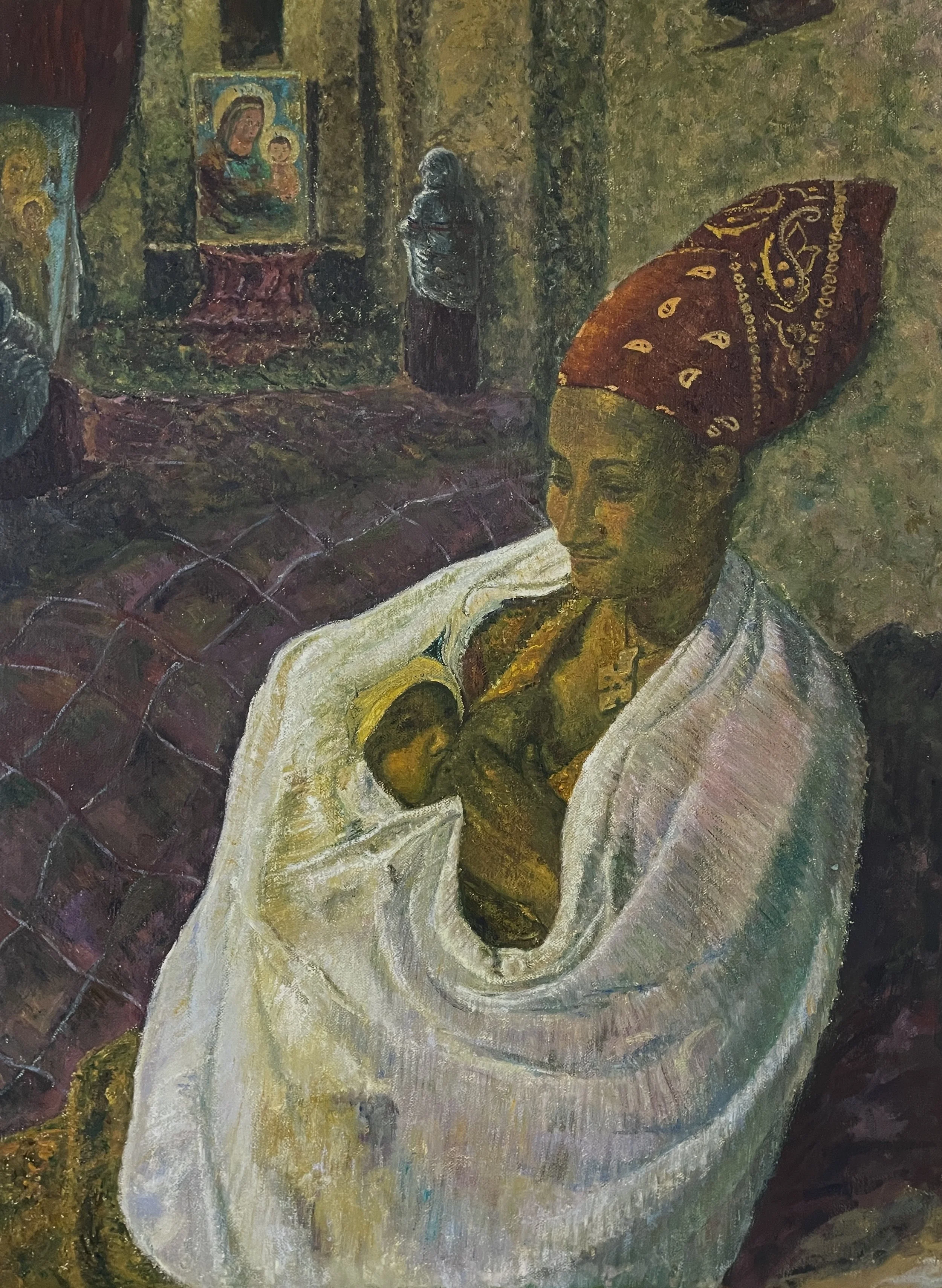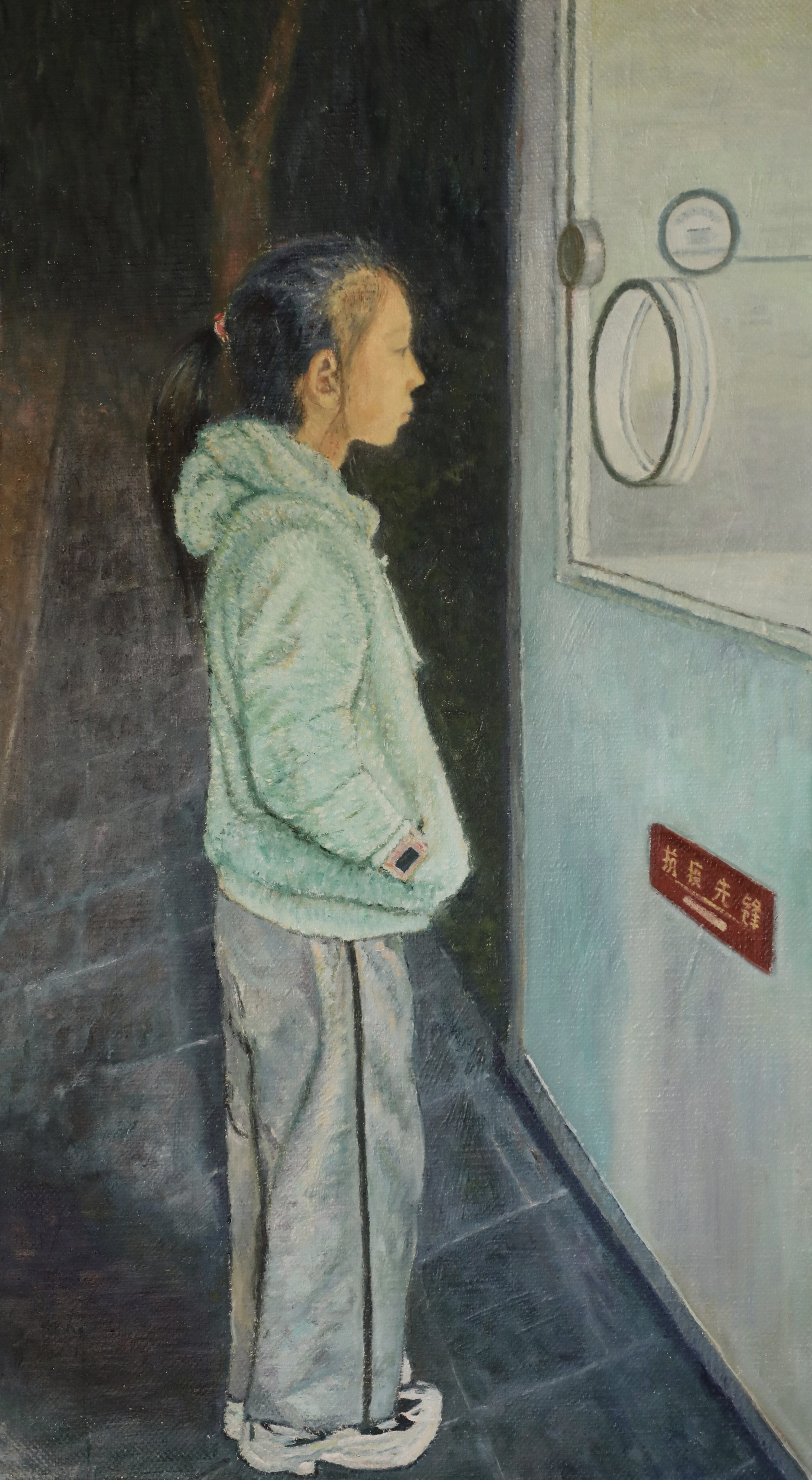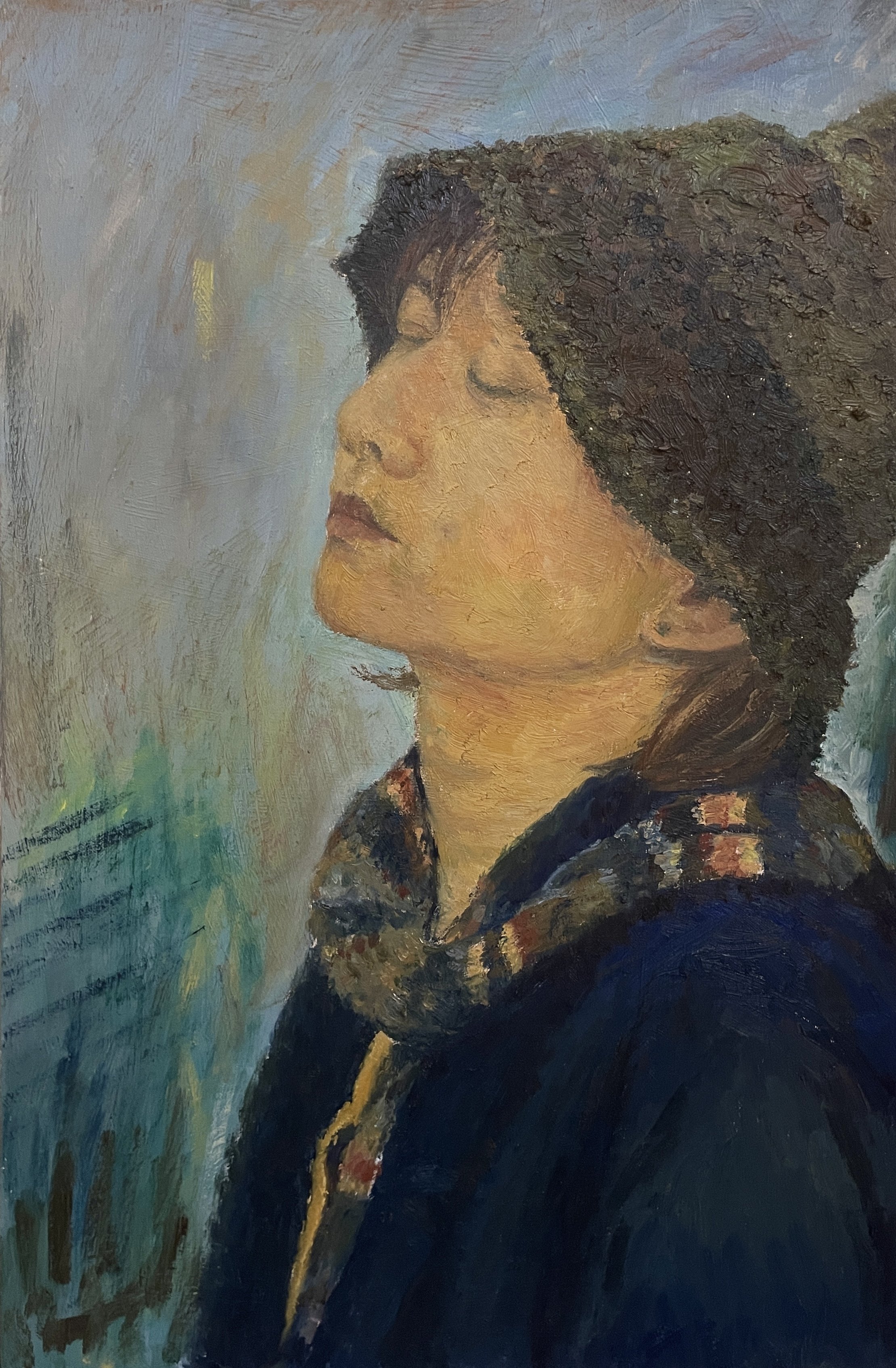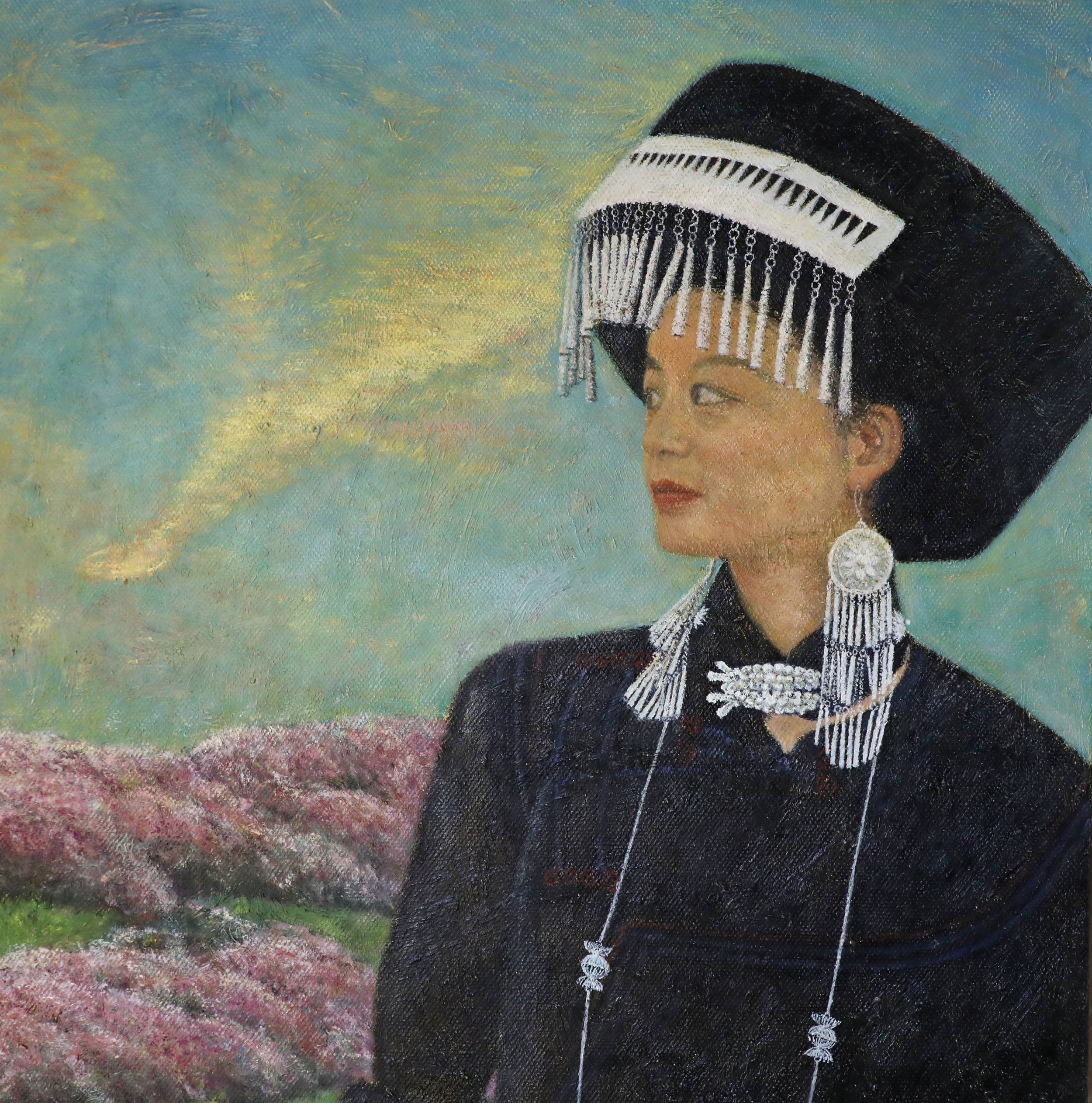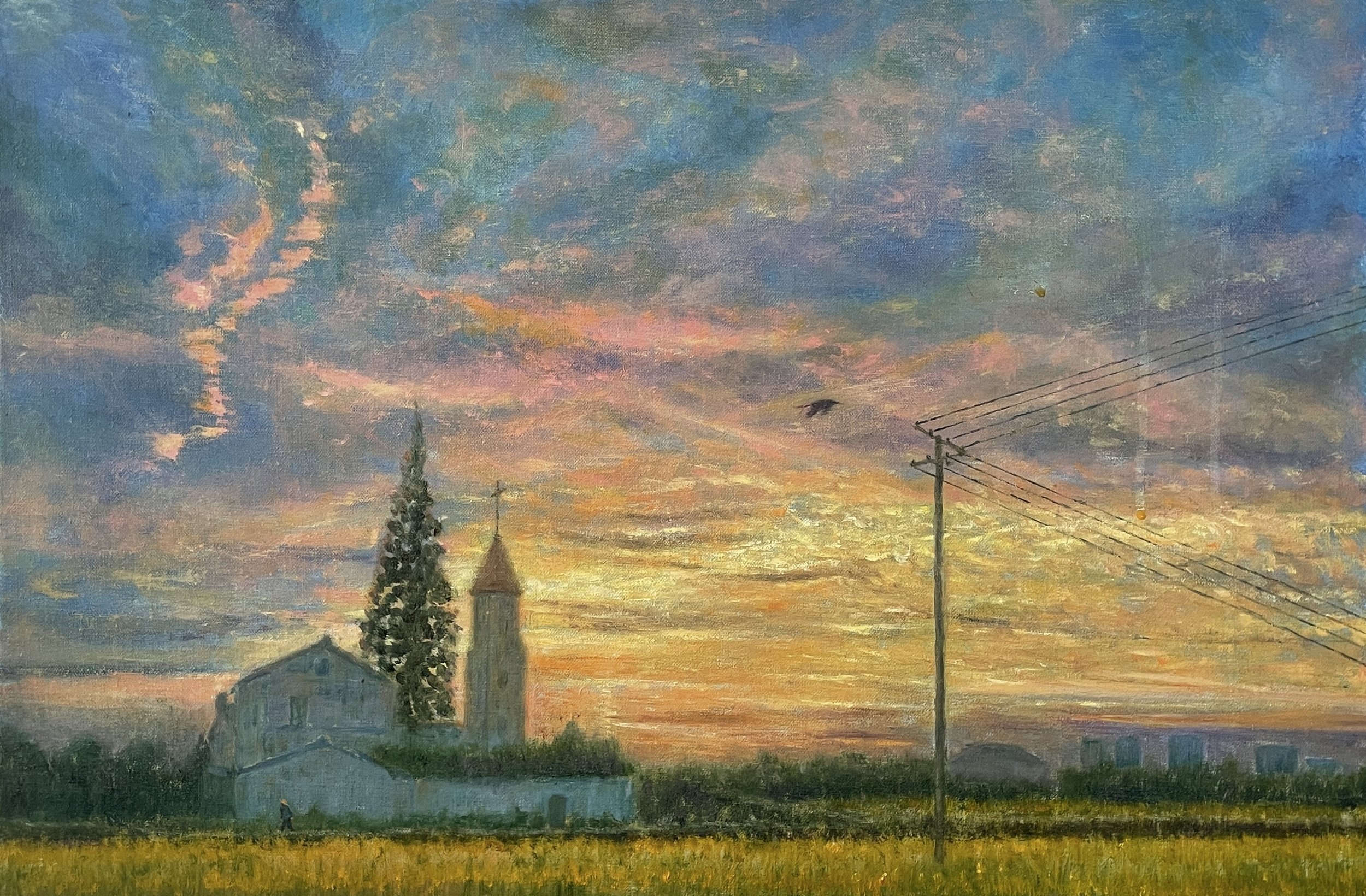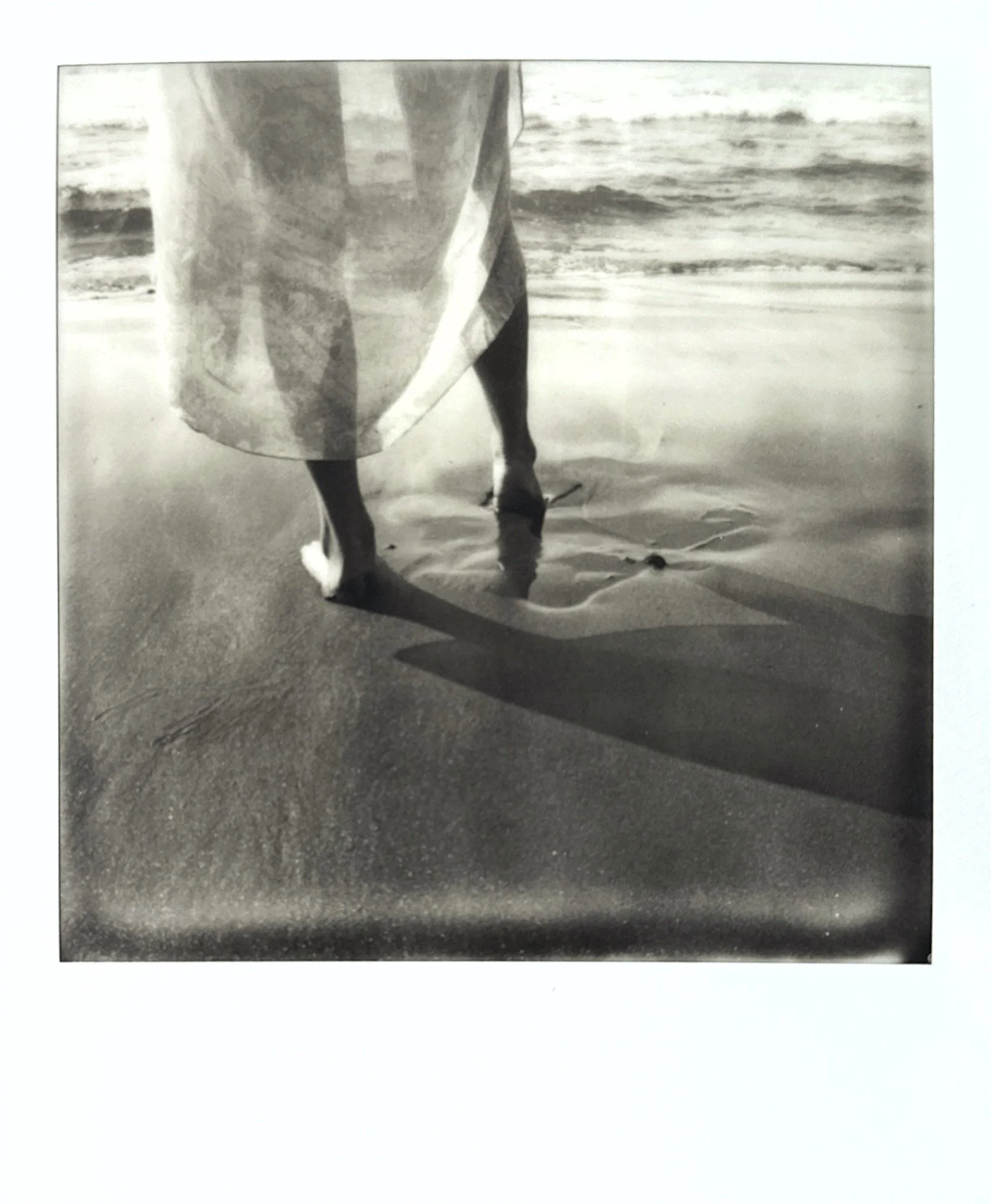Michael Mingqian Yang
Michael Mingqian Yang is an extraordinary artist whose oil paintings transcend the visual realm, delving into the metaphysical connections between humanity, nature, and spirituality. A self-taught painter and photographer, Yang embarked on his artistic journey just eight years ago, following a successful corporate career. His late entry into the art world might suggest a tentative beginning, but his mastery of the medium and profound conceptual depth place him among the most compelling artists of our time. His oeuvre stands as a testament to his innate talent, meticulous technique, and a vision that blends personal history with universal themes.
Yang's transition to art came at a pivotal moment in his life, a decision born of both reflection and ambition. This genesis echoes the narratives of artists like Paul Gauguin, who left conventional professions to answer a deeper calling. Like Gauguin, Yang seeks not just to represent the world as he sees it but to transform it, imbuing each canvas with a spiritual and emotional resonance. His years of travel, from the pastoral villages of China to distant landscapes, have provided him with an expansive palette of inspiration, evident in the nuanced textures and luminous tones of his work.
Yang's process is equally remarkable. Beginning with sketches or photographs that capture fleeting emotional impressions, he reimagines these initial sparks through layers of color and composition. His paintings often transcend their origins, evolving into works that hover between realism and the ethereal, a style that recalls the poetic landscapes of Claude Monet while also bearing the hallmarks of a deeply personal philosophy.
Yang's recent collection is a rich tapestry of themes and moods, each painting inviting the viewer into a unique dialogue. His works, such as "Morning at Lugu Lake" (2021) and "West Lake and Lotus Flower" (2022), display a profound sensitivity to nature. These landscapes shimmer with light and texture, capturing not just the physical beauty of these places but their spiritual essence. The water in these scenes, with its delicate interplay of reflection and transparency, becomes a metaphor for the human soul—fluid, reflective, and inextricably tied to its surroundings.
In "Holy Mountain and Tibetan Sacrifice" (2022), Yang shifts his focus to cultural and spiritual traditions, portraying a sacred moment against the backdrop of a vast, snow-covered landscape. The careful rendering of the figures and their ritualistic gestures speaks to Yang’s deep respect for history and culture. The painting resonates with the weight of collective memory, drawing a parallel to the works of Caspar David Friedrich, whose landscapes similarly evoke awe and spiritual contemplation.
Yang’s portraits, such as "Yi Minority Girl" (2023) and "Tibetan Boy" (2021), are equally captivating. These intimate studies of individuals are rendered with a tenderness that emphasizes their humanity while celebrating their cultural identities. The attention to detail in the textures of fabric and the expressions of his subjects imbues these works with life, while the subdued backgrounds serve to highlight their dignity and presence. His portraiture recalls the work of Jean-François Millet, whose rural scenes similarly elevated ordinary people to iconic status.
What sets Yang apart in the contemporary art scene is his ability to synthesize realism and emotional abstraction. His art is deeply rooted in the physical world but reaches beyond it to explore the psychological and spiritual dimensions of human experience. This duality is evident in works like "Mother and Baby in the Church on Saint Day" (2023), where the intimate act of nurturing is set against the backdrop of a richly textured church interior. The interplay of light and shadow in this painting creates a sense of sacred intimacy, underscoring Yang’s belief in the unity of the physical and spiritual worlds.
Technically, Yang’s use of oil on linen demonstrates a command of traditional methods while allowing for innovative approaches to texture and color. His layered compositions build depth and mood, creating scenes that seem to breathe on the canvas. The deliberate choice of linen as a medium adds a tactile dimension to his work, grounding his often transcendent subjects in material reality.
Yang’s art occupies a unique position in the contemporary art landscape, where conceptual abstraction often dominates. His commitment to figurative and representational art, combined with his philosophical depth, aligns him with a lineage of artists who use their craft to explore the human condition. In this sense, his work is reminiscent of the great masters, from the atmospheric landscapes of J.M.W. Turner to the emotive realism of Andrew Wyeth.
In the art market, Yang’s paintings hold significant value, not only for their aesthetic qualities but for their ability to connect with a broad audience. Collectors and curators alike are drawn to the universal themes of his work—nature, culture, and humanity—and his ability to render them with both authenticity and innovation. As a self-taught artist, Yang represents a triumph of passion and dedication over formal training, a narrative that resonates with audiences seeking authenticity in art.
Michael Mingqian Yang’s art is more than an aesthetic achievement; it is a vital commentary on the relationship between humanity and the natural world. In an era marked by environmental crises and cultural homogenization, his paintings remind us of the beauty and fragility of our planet and the diversity of its inhabitants. By celebrating both the universal and the particular, Yang’s work fosters a sense of connection and empathy that is urgently needed in today’s fractured world.
Yang’s journey from corporate executive to self-taught artist serves as an inspiring testament to the transformative power of art. His story encourages others to pursue their passions, no matter their stage in life, and to find meaning and fulfillment through creative expression.
Michael Mingqian Yang’s paintings are not merely visual experiences; they are profound meditations on life, culture, and nature. His ability to weave personal narrative with universal themes places him among the most significant voices in contemporary art. With each brushstroke, Yang creates a bridge between the past and the present, the material and the spiritual, the individual and the collective. His work is a gift to the art world and to society at large, a reminder of the enduring power of creativity to illuminate the human experience.
In the years to come, Yang’s art is poised to leave an indelible mark, not only as a celebration of beauty and culture but as a call to deeper reflection and connection. His paintings, rich with meaning and meticulously crafted, stand as a testament to the extraordinary potential of a self-taught artist whose vision knows no bounds. Michael Mingqian Yang is, without question, a master in the making.
Michael Mingqian Yang’s artistry is a radiant beacon in the contemporary art world, a poignant reminder of how deeply art can touch our collective soul. His journey, fueled by a deep yearning to connect humanity with the natural and spiritual worlds, is an ode to the transformative power of creativity. His paintings are more than just visual compositions—they are dialogues with time, space, and the human spirit, inviting viewers to step into moments of quiet reflection and boundless wonder.
Yang’s works transcend the boundaries of genre and technique, carving a unique niche that bridges classical mastery and contemporary relevance. In a world increasingly dominated by fleeting digital images and ephemeral trends, his art serves as a sanctuary of permanence and depth. Each painting is imbued with layers of meaning, crafted with an almost meditative reverence for the subjects he portrays. This reverence, coupled with his bold yet empathetic vision, positions Yang as not just an artist, but a philosopher with a brush.
His art holds up a mirror to society, urging us to reconnect with our shared humanity and the fragile beauty of the world around us. Michael Mingqian Yang is not merely creating art; he is forging a legacy—one brushstroke at a time.
By Marta Puig
Editor Contemporary Art Curator Magazine
Holy mountain and Tibertan sacrifice, 2022, Oil on Linen, 100x120 cm
Mother and baby in the church on Saint day, 2023, Oil on Linen, 90x120 cm
Yi minority girl and harvesting, 2023, Oil on Linen, 100x120 cm
Girl at COVID pandemic period, 2022, Oil on Linen, 50x90 cm
Girl, 2023, Oil on Linen, 40x60 cm
Tibertan boy, 2021, Oil on Linen, 40x50 cm
Yi minority girl, 2023, Oil on Linen, 80x80 cm
West lake and lotus flower, 2022, Oil on Linen, 80x115 cm
Morning at Zhangpu village, 2020, Oil on Linen, 60x40 cm
Morning at Lugu lake, 2021, Oil on Linen, 40x60 cm

